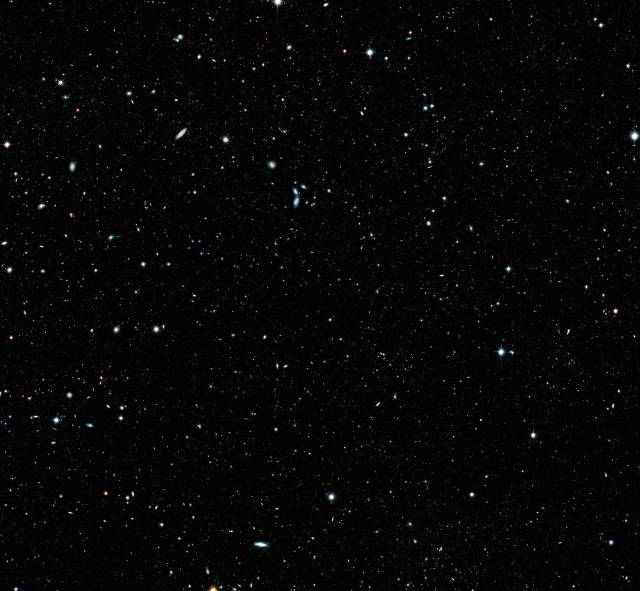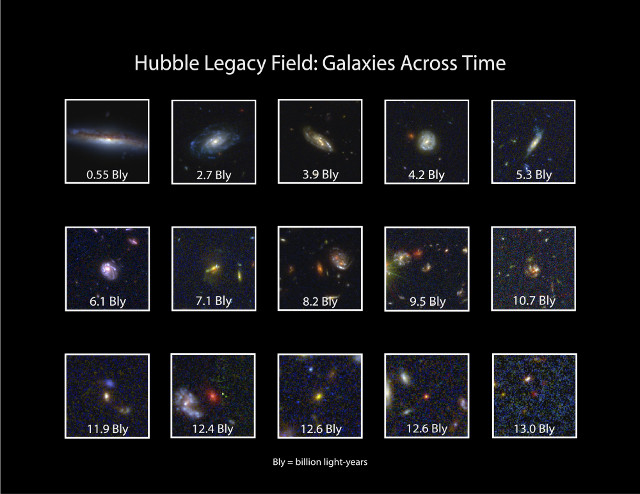
A mosaic of images created by combining 7,500 images captured by the Hubble Space Telescope offers a portrait of a part of the universe containing 265,000 galaxies up to 13.3 billion light years away, which means that we see the most distant of them as they were about 500 million years after the Big Bang. The result was named the Hubble Legacy Field and also combines observations taken from various deep field campaigns of the past years at wavelengths ranging from ultraviolets to near infrareds. It also shows the universe that evolves over time.
The history of the deep field observations with the Hubble space telescope began in 1995 with a campaign that at the time was unprecedented and raised some criticism in the field of astronomy. Many asked for the assignment of a few hours of observations and the project to aim Hubble towards a small area of sky that seemed empty for ten consecutive days seemed to someone a great waste of time. The result silenced the critics with the discovery of thousands of galaxies, many billions of light years from Earth, and was a leap forward for research on the early universe.
That first campaign had several follow-ups over the years and the Hubble space telescope service missions with the installation of more advanced instruments led to a further improvement in the discovery of very distant and very dim galaxies, up to a tenth of a billionth of the brightness perceivable by the human eye. Now a team of researchers assembled 7,500 images captured over 16 years in a project that according to its leader Garth Illingworth of the University of California at Santa Cruz (UCSC) provides images that will remain unmatched until the launch of new space telescopes that are more advanced such as the James Webb.
The various deep field images helped a considerable amount of astronomers in their research, the Hubble Legacy Field project takes a step forward by assembling thousands of images with a consistency visible in the top image (NASA, ESA, G. Illingworth and D. Magee (University of California, Santa Cruz), K. Whitaker (University of Connecticut), R. Bouwens (Leiden University), P. Oesch (University of Geneva), and the Hubble Legacy Field team.). It allows to see many thousands of galaxies at various stages of their evolution, offering a broader view of the history of the universe.
The bottom image (NASA, ESA, G. Illingworth and D. Magee (University of California, Santa Cruz), K. Whitaker (University of Connecticut), R. Bouwens (Leiden University), P. Oesch (University of Geneva ), and the Hubble Legacy Field team) shows a selection of 15 galaxies at various distances, expressed in billions of light years: in the top panel there are “adult” galaxies, the middle panel shows “teenage” galaxies and the bottom panel shows very distant galaxies in the first phase of their life.
The wide view of the global image, which in the sky has a width close to the full Moon’s, put together the work of 31 Hubble programs of different teams of astronomers for a total of over 250 days of observations. The team that assembled the images is working on a new set for a new view that, together with the one just published, will allow researchers to carry out new studies and it will be useful to look for areas of sky to be observed with the telescopes that will be activated in the next years.


